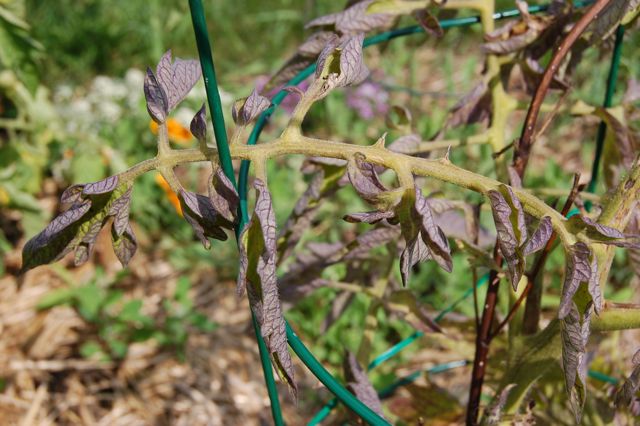This is one of Sarah’s tomato casualties, which I think we’ve IDed as being felled by beet curly top virus, an insect-borne malady. The leaves have curled upward and become stiff (Sarah says: like rigor mortis for tomatoes), with purple veining on the undersides. The whole plant has become stunted and curled, not older or younger leaves. There is no cure, so the plant has been removed.
This particular specimen was the largest, most robust tomato in the community garden at the time of planting. That’s likely why the culprit beet leafhopper found it, took a nibble, and infected the plant with the virus.
I’ve Googled a couple of good online references for this, both from south of the border. Nothing that I could find from local sources was as simple or comprehensive. The first is a very useful key to recognizing tomato problems from Colorado State University. Worth bookmarking. The second is this description of the curly top virus disease from Oklahoma State University.





3 comments
Am I to imply that this virus spreads from plant to plant, so recognizing early signs prevents more carnage? (Or is that chlorphyllage?) I haven't run into this before, looks ugly.
It's always something, it seems.
Thank goodness there are upcoming seasons. Some days I just want to curl up myself!
Pomona,
From what I gather, the virus is spread only by wandering beet leafhoppers — who hop. That's why the disease seems to strike randomly. The plant can't transfer the virus to another plant without a carrier. The plant right next to this one seems fine. The link in the post has more info.